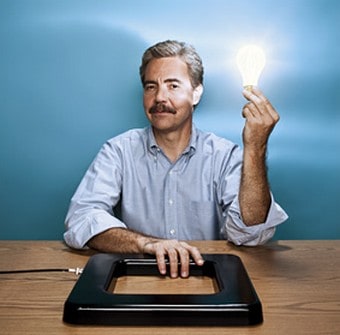Marin Soljacic couldn’t sleep. The problem was his wife’s Nokia cell phone. The tyrannical device beeped on the bedside table when it needed to be plugged in. It could not be disabled, reports CNNMoney.
Instead of taking a hammer to the phone, Soljacic marveled at the fact that this device, and billions of others like it, was sitting a few feet away from all the electricity it could ever need. Why couldn’t it receive power wirelessly, just as laptops get Wi-Fi?
Being a physics professor, not an electrical engineer, Soljacic didn’t know the history of failed attempts to produce wireless electricity. (Thomas Edison and his rival Nikola Tesla were among the first to envision long-distance power-beaming.) Soljacic also didn’t pause to consider conduction, the kind of close-range charging used in electric toothbrushes, which is about as far as wireless electricity got before him.
Soljacic learned that if you could get two magnetic fields to resonate — to sing the same note, in effect — they could transfer an electric current. With two large magnetic coils, he found in an experiment described in Science magazine in 2007, you can throw 60 watts across a room, powering a lightbulb. (Keeping the two resonators in perfect harmony over a distance is not simple; Soljacic spent several years running lab experiments before he built a system that worked reliably.)
Continue Reading: “Next Little Thing: Invisible Power”
Photo by CNNMoney.
